Sourdough English Muffins
If you’re looking for a way to use your sourdough starter beyond the usual loaf, these Sourdough English Muffins are a must-try. They have that signature nooks-and-crannies texture, a golden crust from the skillet, and just the right hint of tang from an overnight ferment.
Making English muffins at home is simpler than you might expect. This recipe uses a straightforward mix-and-rest method. No fancy shaping or oven is required—just a good skillet and a little patience. Most prep is hands-off, letting time and sourdough do the work. This means mixing up a batch in the evening, chilling the dough in the fridge overnight, and cooking the muffins in the morning! I mean, how perfect is that?
Whether spreading homemade jam or layering up a breakfast sandwich, these English muffins are hearty, flavorful, and freezer-friendly. Once you try them, you may never go back to store-bought again.
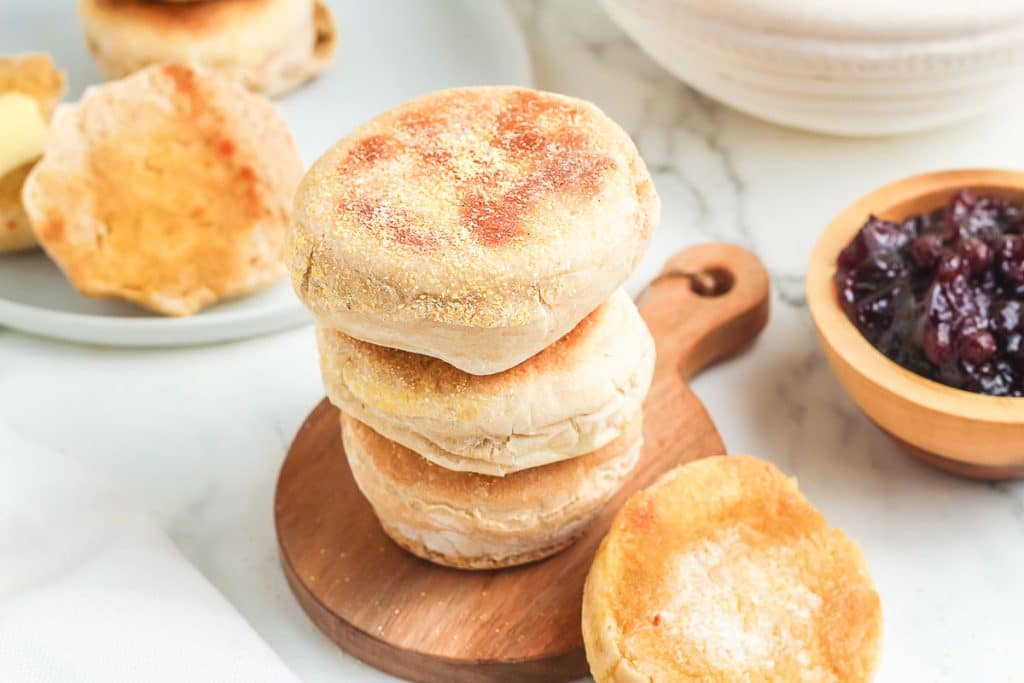
Table of Contents
Gathering Your Ingredients for Perfect Sourdough English Muffins
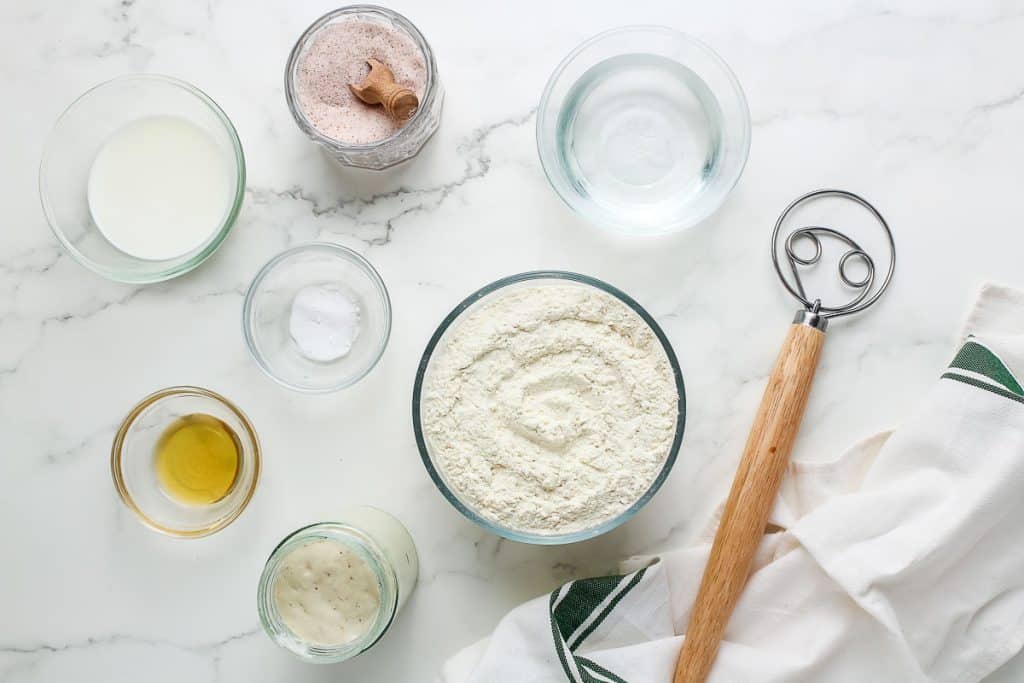
Active Sourdough Starter: An active sourdough starter is essential in this recipe because it provides the natural leavening needed for the English muffins’ rise and airy texture. When your starter is bubbly, well-fed, and has recently doubled, it contains a healthy wild yeast population and beneficial bacteria. These microorganisms produce carbon dioxide during fermentation, creating tiny air pockets that give English muffins their soft, chewy crumb and signature nooks and crannies.
If the starter isn’t active, the dough won’t rise properly, leading to dense, flat muffins with a doughy interior. An active starter also contributes to the flavor, offering that mild tang sourdough is known for, which adds depth without being overpowering. In short, a lively starter means better texture, better taste, and a more successful result.
All-Purpose Flour: AP flour forms the structure of your muffins. For variation, you can experiment with whole wheat or other flours. I used King Arthur unbleached all-purpose flour, which has a protein content of 11.7%
Milk: Milk’s richness helps create a tender crumb. Plant-based milks can be used for a vegan version.
Honey: A small amount feeds the yeast and adds a subtle sweetness.
Baking Soda: Baking soda is added to this sourdough English muffin recipe to enhance the texture and flavor. While the sourdough starter provides natural leavening through slow fermentation, baking soda gives the dough an extra lift during cooking, helping to create a lighter, more airy texture with better nooks and crannies. It also helps neutralize some acidity that builds up during the long fermentation, resulting in a more balanced flavor. This added lift allows the muffins to cook through more quickly and evenly, preventing the outsides from over-browning before the centers are done.
Cornmeal: Used for dusting, preventing sticking, and adding a pleasant texture to the exterior.
Remember, the quality of your ingredients will directly impact the final product. When possible, opt for high-quality, organic ingredients for the best results.
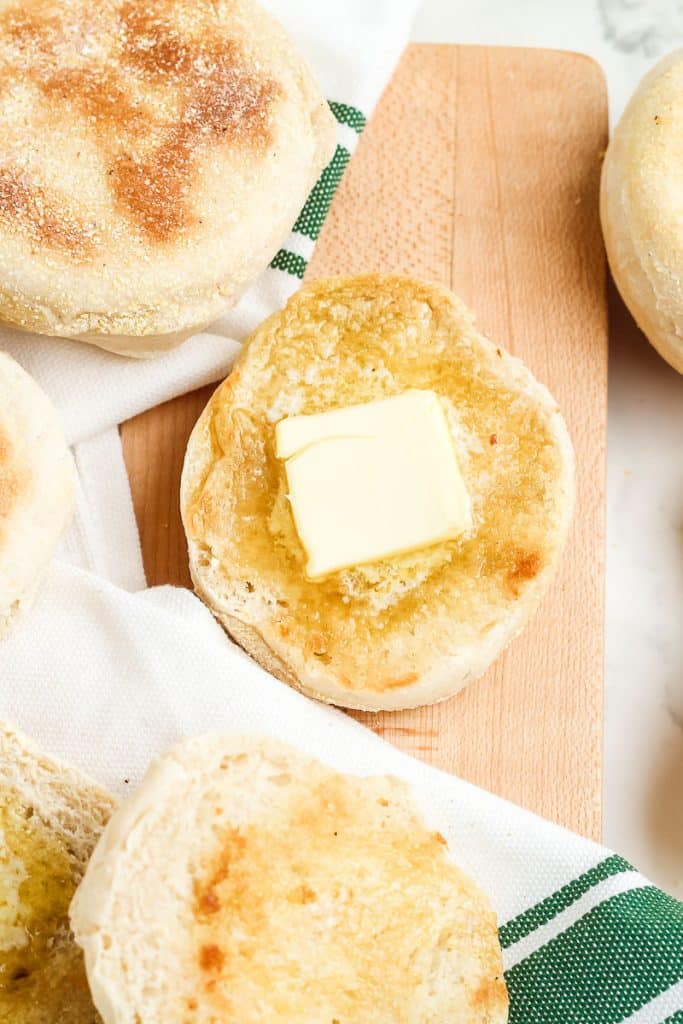
How to Make Sourdough English Muffins
Make Dough
- Six hours before starting your dough, feed your sourdough starter equal parts flour and water. Once the starter has doubled in size, it is ready to use.
- Add the water, starter, milk, salt, and honey to a large bowl. This recipe is easiest if you use a food scale and add the ingredients by weight.
- Stir with a whisk until all ingredients are combined. Do not overmix.
- Add the flour and baking soda. Mix until the flour is incorporated into the mixture using a whisk. This will take a few minutes.
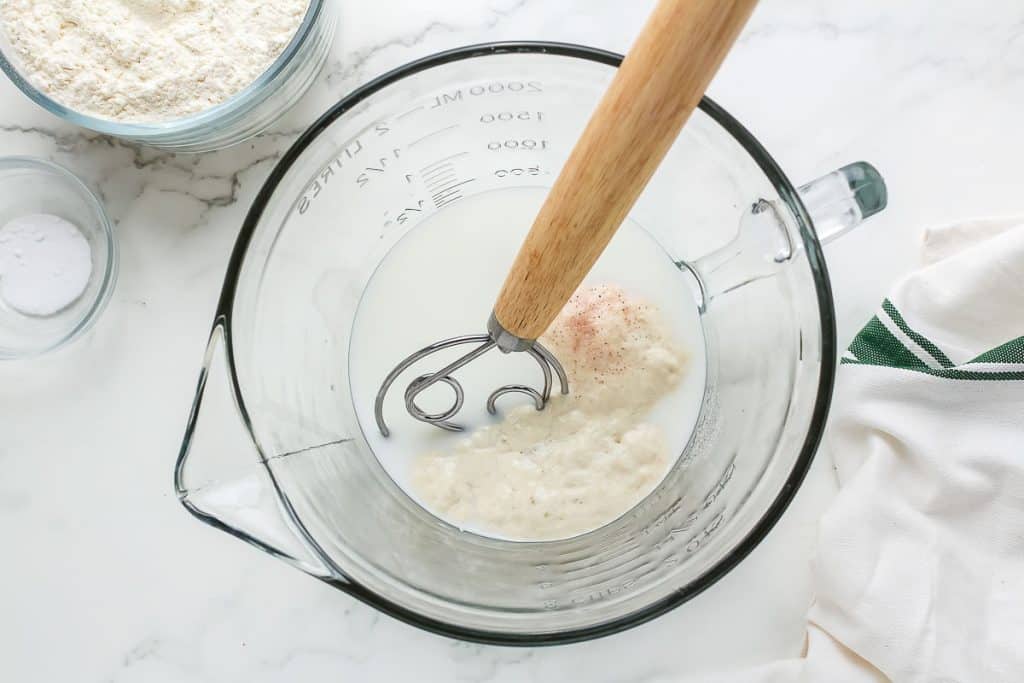
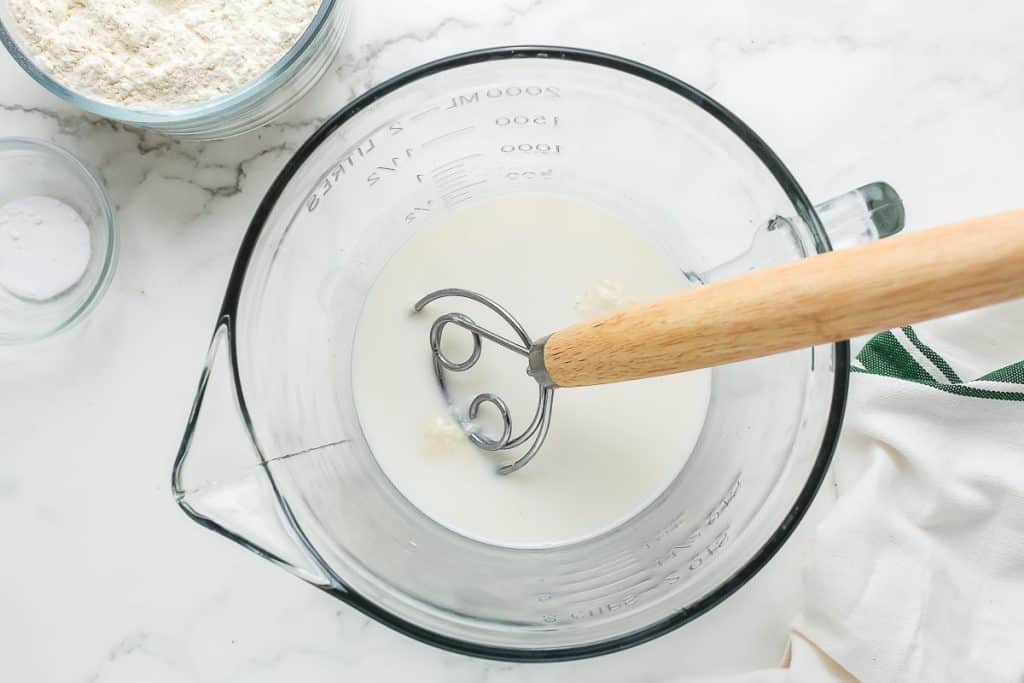
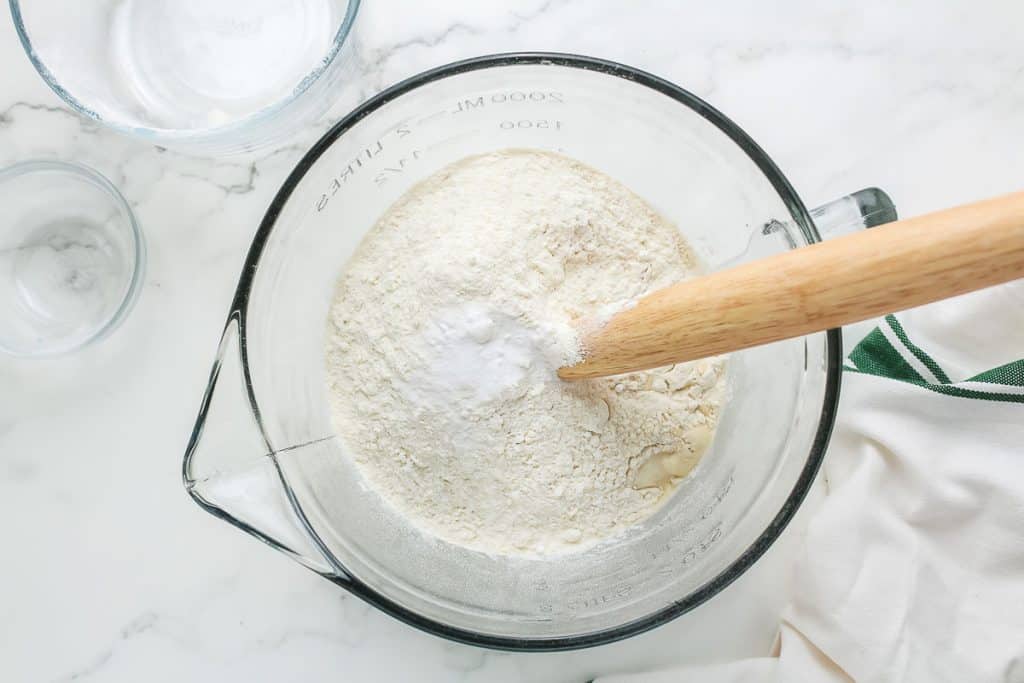

- In the bowl, or on a flat surface, knead the dough lightly for 3-5 minutes or until a dough ball has formed and no visible flour is left on the dough.
- Place the dough ball back in the bowl and cover with plastic wrap.
- Let the dough ferment at room temperature overnight or for 8–12 hours.

- Once the dough has fermented, place it on a clean surface sprinkled with cornmeal. Gently flatten/stretch the dough to about ½” thick.
- Using a cup edge or biscuit cutter, cut out the English muffins. (Mine were about 3” in diameter.) Roll up the dough scraps and flatten them to form the remaining muffins.
- Sprinkle cornmeal on the other side of the dough, and let the muffins rest on a baking sheet for one hour at room temperature, or in the oven with the light on. Cover with a tea towel while they rest.

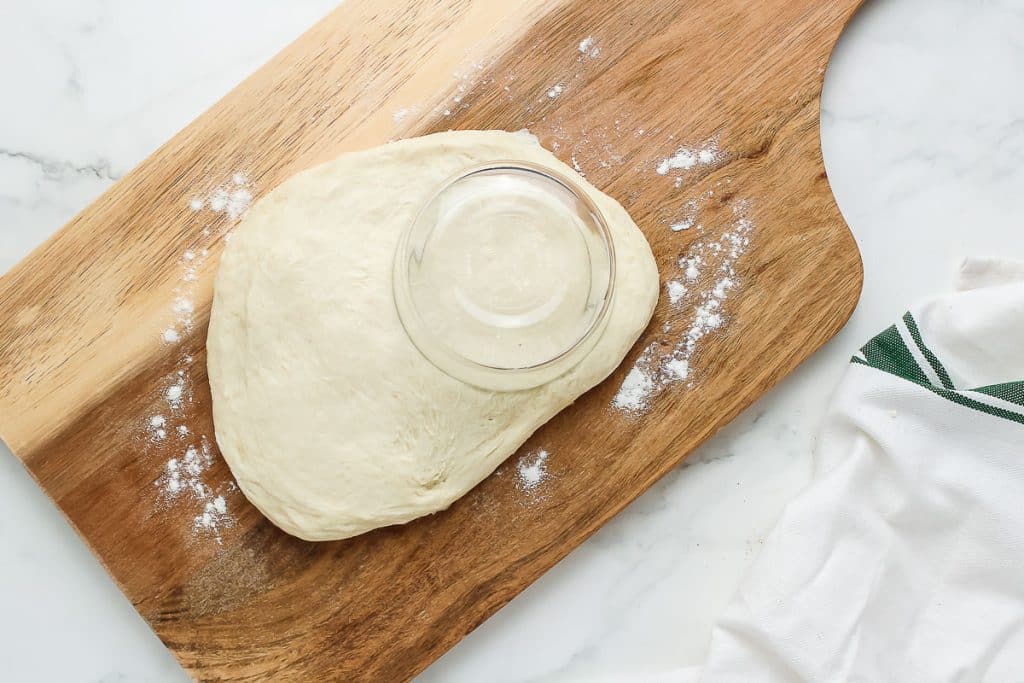
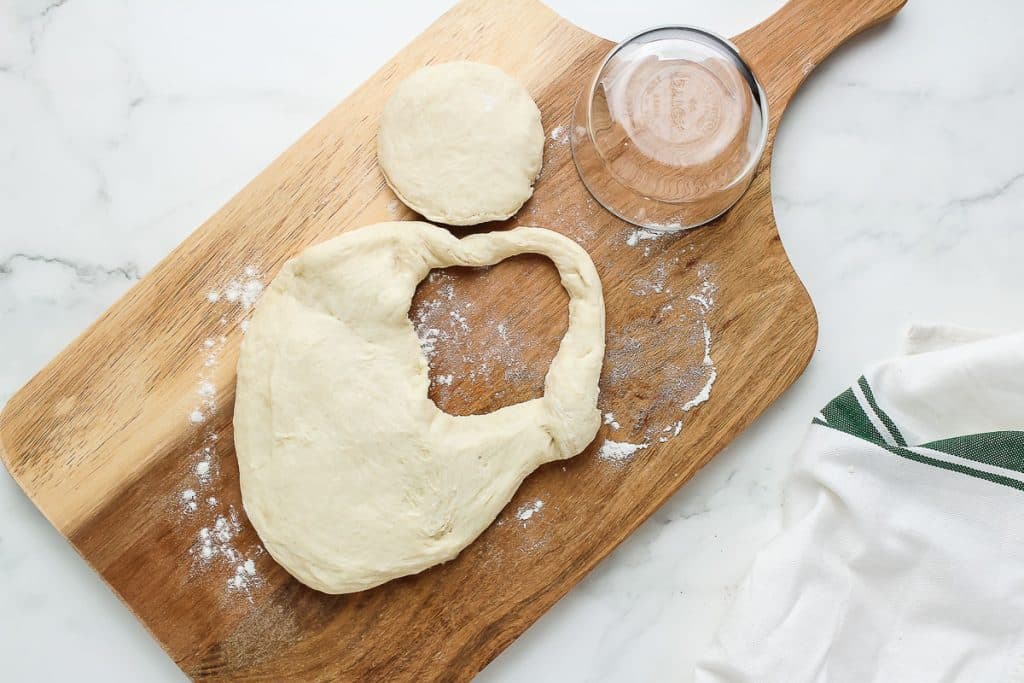
Cooking Instructions
- Heat a nonstick pan or cast iron skillet over medium-low heat. Heat the pan for 5 minutes, then add a drizzle of oil. Wait another minute and place the English muffins onto the pan. Sprinkle with more cornmeal, and press down gently to ensure the muffin’s side facing the pan is flat. I found that cooking four at a time was the easiest method.
- Cook for 5–8 minutes without moving the muffin, then flip to cook the other side. After you flip the muffin, press down on it slightly with the back of your spatula to ensure a flat cook on both sides. Cook for another 5-8 minutes on that side. Both sides should be golden brown. You will know that the center is cooked when you press on the side of the muffin and it springs back/no longer feels doughy. Cooking the muffins at a low heat ensures that the inside will be cooked without burning the outside.
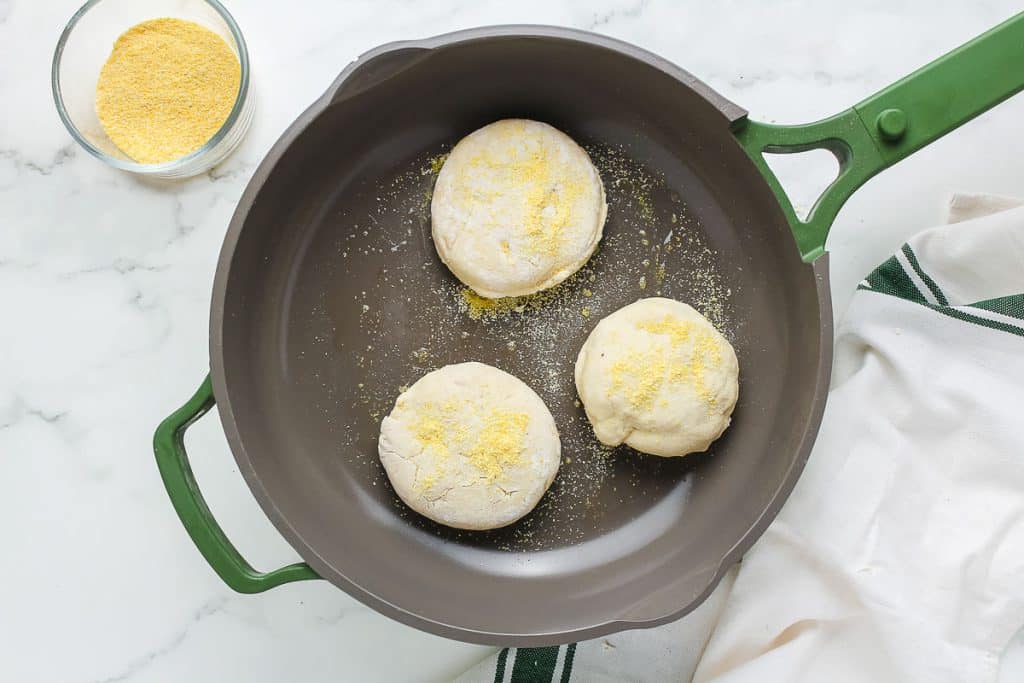
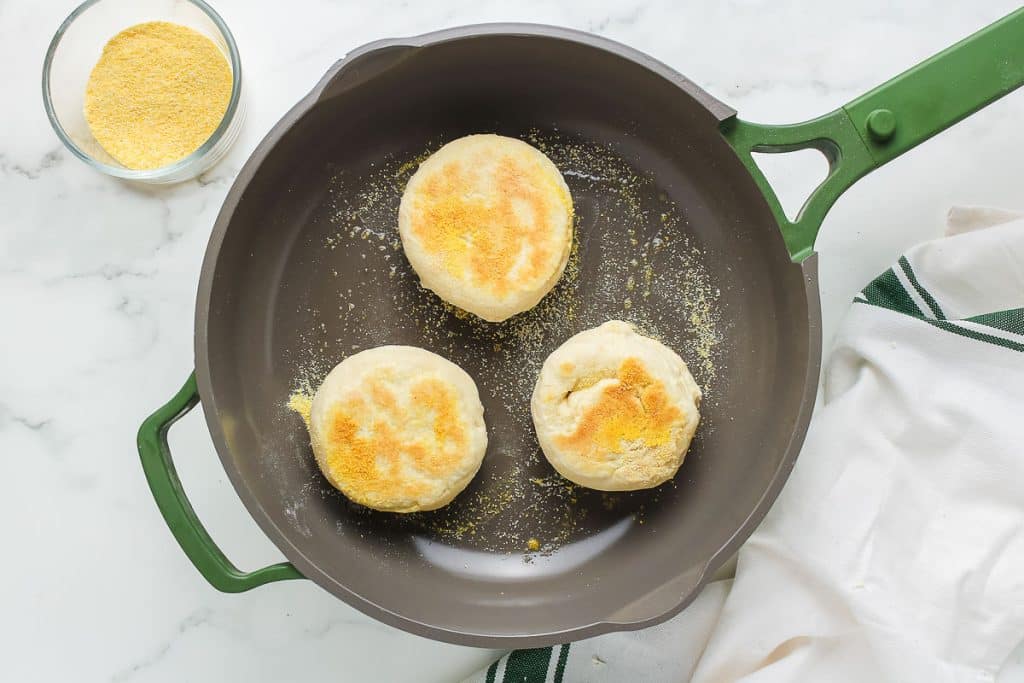
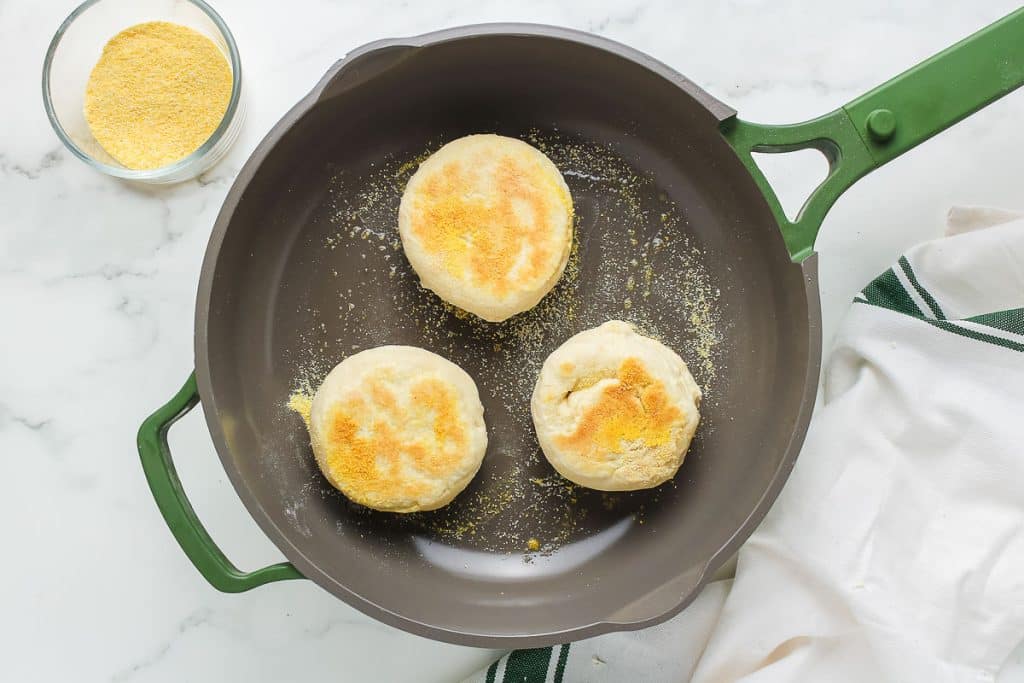
Storing and Freezing Sourdough English Muffins
Once your sourdough English muffins have cooled completely, the best way to store them depends on how soon you plan to enjoy them. For short-term storage, keep the muffins in an airtight container or zip-top bag at room temperature for up to three days. A paper towel placed inside the container can help absorb excess moisture and keep them from getting soggy. Avoid refrigerating them, as refrigeration tends to dry out baked goods more quickly.
If you’d like to store them longer, freezing is a great option and helps preserve their flavor and texture. To freeze, start by making sure the muffins are thoroughly cooled. Then place them in a single layer on a baking sheet and freeze for 1–2 hours until firm—this step helps keep them from sticking together. Once frozen, transfer the muffins to a zip-top freezer bag or an airtight container, removing as much air as possible before sealing. They’ll keep well in the freezer for up to two months.
For convenience, you can also split the muffins in half before freezing. That way, you can pop them straight into the toaster without waiting for them to thaw. Whether you freeze them whole or halved, there’s no need to defrost before toasting—just toast until warmed through and golden. With proper storage, these sourdough English muffins can be just as delicious a few weeks later as the day you made them.

Want the taste of sourdough without having to make individual muffins?
This English muffin bread has a flavor similar to a sourdough English muffin, but with a softer crust since it is baked differently than traditional English muffins. The bread is soft and spongy, resembling the inside of a sourdough muffin. When sliced thin and toasted, it captures all the delightful qualities you love in a classic English muffin.
Tips for the Best Sourdough English Muffins
Use an active, bubbly starter. After feeding, your starter should have doubled in size and smell pleasantly tangy within 4-12 hours. The time discrepancy is due to room temperature. The warmer the room, the quicker your starter should double. An underactive starter can lead to dense muffins.
Don’t rush fermentation. The eight—to twelve—hour fermentation gives the muffins their characteristic tang and light texture. If possible, let it go the whole time.
Handle the dough gently after fermentation. This helps retain air pockets and leads to a lighter muffin.
Maintain low heat while cooking. English muffins are thick, and cooking too fast over high heat can leave the centers underdone while the outsides overbrown.
Check doneness by feel. When pressed, the sides should be springy and firm. Give them more time on the heat if they still feel soft and doughy.
Frequently Asked Questions
You can use discard, but the muffins will be less fluffy and may have a sharper tang. To compensate, consider adding ½ tsp of instant yeast to help with rise.
The combination gives a tender crumb (thanks to the milk) while keeping the dough light. All water will work, but the texture may be slightly chewier.
Cornmeal isn’t required, but it gives a classic look and prevents sticking. You can substitute semolina or skip it entirely if needed.
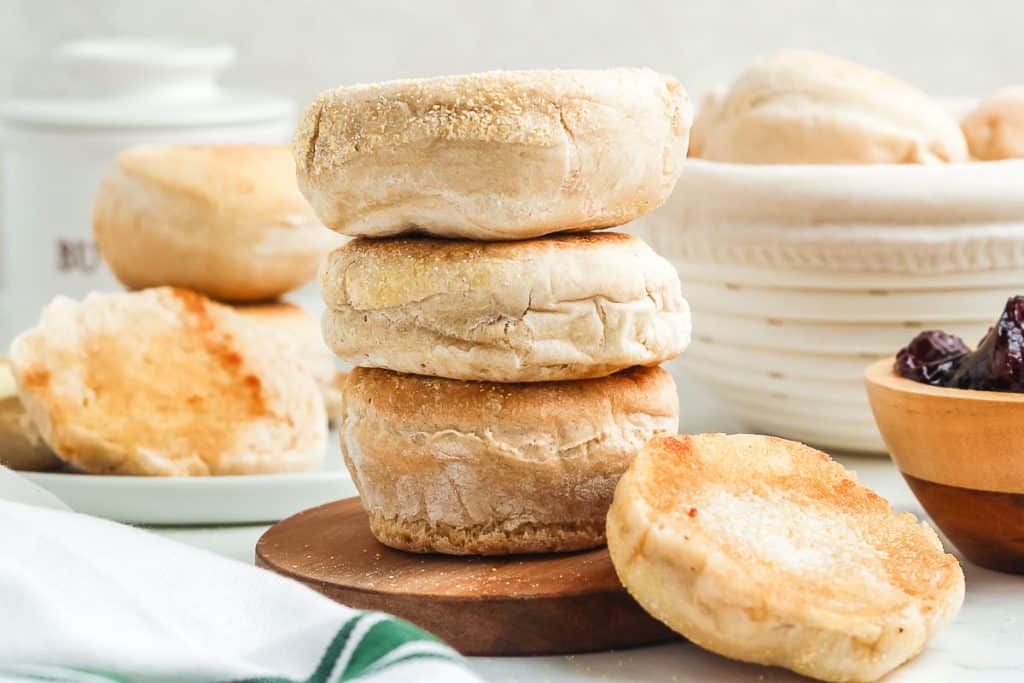
Troubleshooting this Sourdough English Muffin Recipe
Muffins are too dense or flat.
Your sourdough starter may not have been active enough. It should be bubbly and doubled in size within 4–6 hours of feeding. Also, ensure you ferment the dough for 8–12 hours at room temperature to develop structure and flavor.
Muffins are still doughy in the middle after cooking.
This is usually caused by cooking over too high a heat. Stick with medium-low heat and let the muffins cook undisturbed for 5–8 minutes per side. The edges should feel firm and springy—if they still feel soft, let them go a little longer. Consider these muffins similar to pancakes; it’s best not to move them while they cook. After a few minutes, lifting a muffin is acceptable to check if it’s browning.
Muffins spread out and don’t hold their shape.
If your muffins flatten too much, the dough may be too slack or over-proofed. Gently handle the dough after the overnight ferment, and if it feels too loose, dust with a bit of flour while shaping. A slightly sticky dough is normal, but shouldn’t be wet or runny.
Muffins taste too sour.
An overly tangy flavor can result from an underfed or too-acidic starter or from an extended ferment in a warm environment. Try regularly feeding your starter or shortening the ferment by an hour or two. Don’t skip the baking soda—it helps balance acidity and adds lightness.
Muffins are sticking to the pan.
Ensure your pan is well-seasoned cast iron or nonstick and preheated for at least 5 minutes. Add a bit of oil before cooking, and always sprinkle cornmeal on the dough and in the pan to help prevent sticking and add texture.
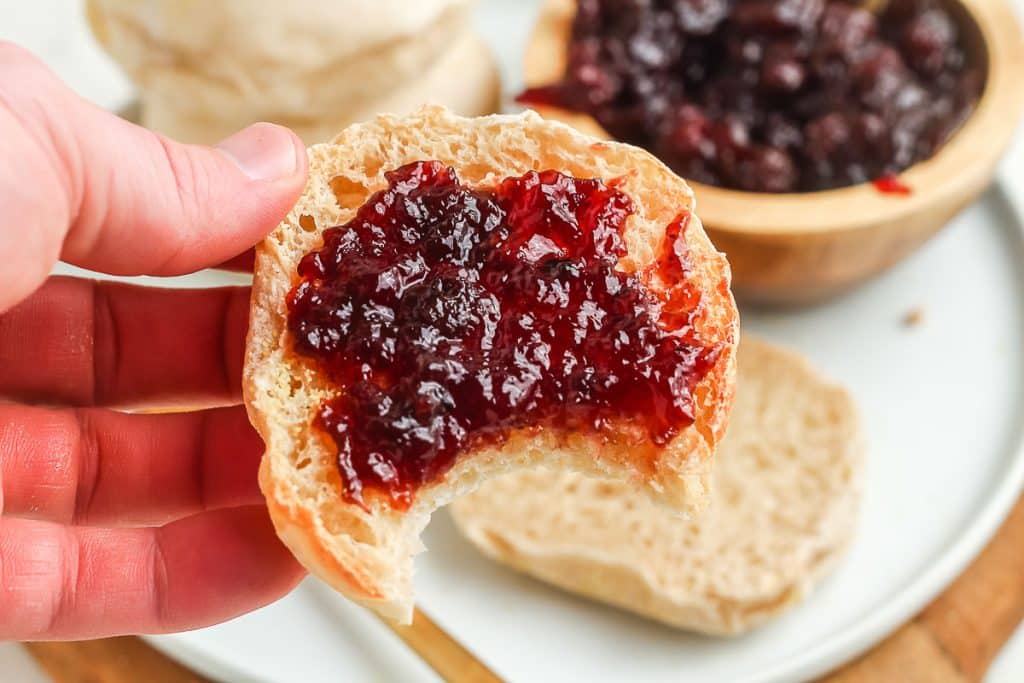
Serving Suggestions
Classic Toasted with Butter or Jam
You can’t go wrong with a warm, toasted English muffin slathered in butter, fruit preserves, or honey. The crispy edges and soft interior are perfect for soaking up spreads.
Breakfast Sandwiches
Use them as the base for homemade breakfast sandwiches with eggs, cheese, and bacon or sausage. Their sturdy structure holds up well to layers and melty ingredients.
Open-Faced Toppings
Top with avocado, sliced tomato, and a sprinkle of salt for a quick and satisfying bite. Or go sweet with nut butter, banana slices, and a drizzle of maple syrup.
Eggs Benedict
English muffins are a classic base for Eggs Benedict. Add poached eggs, ham or smoked salmon, and a generous spoonful of hollandaise sauce for a brunch-worthy plate.
Mini Pizzas
Split and toast the muffins, then top with marinara, shredded cheese, and your favorite toppings. Broil until bubbly for a quick lunch or kid-friendly dinner.
Soup or Salad Side
Serve toasted halves alongside a bowl of soup or a crisp salad. Their chewy texture makes them a nice change from the usual bread or crackers.

Sourdough English Muffins
Equipment
Ingredients
- 180 grams water
- 100 grams milk
- 100 grams fed sourdough starter
- 12 grams honey
- 6 grams salt
- 3 grams baking soda
- 450 grams unbleached all-purpose flour
- About 2 Tbsp corn meal for sprinkling
Instructions
- Six hours or so before starting your dough, feed your sourdough starter equal parts flour and water. Once the starter has doubled in size, it is ready to use.
- In a large bowl, add the water, starter, milk, salt, and honey. I find that this recipe is the easiest if you use a food scale and add the ingredients by weight.
- Stir with a whisk until all ingredients are combined. Do not overmix.
- Add the flour and baking soda. Using a whisk, mix until the flour is incorporated. This will take a few minutes.
- In the bowl, or on a flat surface, knead the dough lightly for 3-5 minutes or until a dough ball has formed and there is no visible flour left on the dough.
- Place the dough ball back in the bowl and cover with plastic wrap.
- Let the dough ferment at room temperature overnight or for 8–12 hours.
- Once the dough has fermented, place it on a clean surface sprinkled with cornmeal. Flatten/stretch the dough gently to about ½” thick.
- Using a cup edge, or biscuit cutter, cut out the English muffins. (Mine were about 3” in diameter.) Roll up the dough scraps and flatten them back out to form the remaining muffins.
- Sprinkle cornmeal on the other side of the dough, and let the muffins rest on a baking sheet for one hour at room temperature, or in the oven with the light on. Cover with a tea towel while they rest.
Cooking instructions:
- Heat a nonstick pan or cast iron skillet to medium low. Heat the pan for 5 minutes, then add a drizzle of oil. Wait another minute and place the English muffins onto the pan. Sprinkle with more corn meal, and press down gently to make sure the side of the muffin facing the pan is flat. I found that cooking 4 at a time was the easiest method.
- Cook for 5–8 minutes without moving the muffin, then flip to cook the other side. After you flip the muffin, press down on it slightly with the back of your spatula to make sure there is a flat cook on both sides. Cook for another 5-8 minutes on that side. Both sides should be golden brown. You will know that the center is cooked when you press on the side of the muffin and it springs back/no longer feels doughy. Cooking the muffins at a low heat ensures that the inside will be cooked without burning the outside.
- Cool completely before cutting, then feel free to toast the muffin halves. Serve with butter, jam, peanut butter, or any of your favorite toppings, and enjoy!
Nutrition
Other Sourdough Recipes
Our sourdough recipes are divided between sourdough discard recipes and active starter sourdough recipes. We also have a recipe and tutorial for making your sourdough starter.
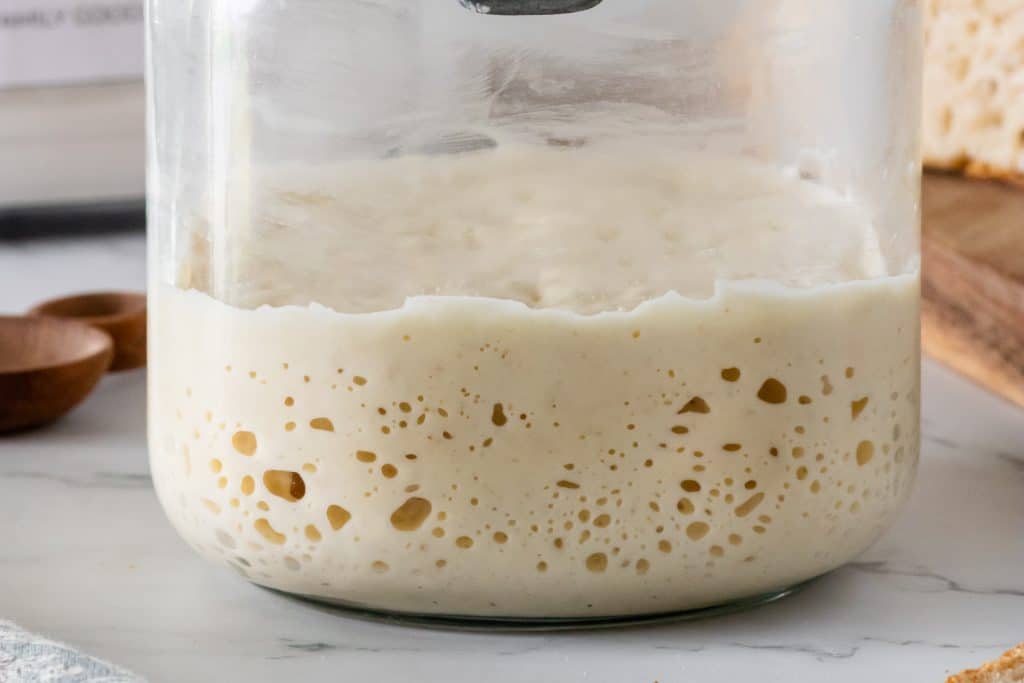
Sourdough Discard Recipes
Sourdough discard is the portion of sourdough starter removed during feeding to maintain a healthy and active culture. When you feed a sourdough starter, you typically add fresh flour and water, but before doing so, a portion of the existing starter is discarded to prevent it from growing too large and to maintain the right balance of yeast and bacteria.
- Sourdough Discard Pizza Dough
- Sourdough Discard Banana Muffins
- Fluffy Sourdough Discard Pancakes
- Sourdough Discard Cheese Crackers
- Sourdough Discard Tortillas
- Sourdough Discard Waffles
Sourdough Recipes
- Sourdough Bread Recipe
- Sourdough English Muffin Bread
- Sourdough Cinnamon Rolls
- Easy Sourdough Flatbread
- Sourdough Focaccia
Bookmark this page or pin the following image to refer back to this Sourdough English Muffins recipe in the future.

Thanks so much for spending a few minutes of your busy day with me!
To ensure you don’t miss future content, pop your email in the pale green box on the right or click here. I usually send one email weekly, so I won’t inundate your inbox. I’m sensitive to an overflowing email inbox!
We will only use your email address to send you emails, no more than 1-2 weekly. In addition, you will have access to my growing library of knit & crochet patterns and other printables. Check back often as this library will continue to grow. You can unsubscribe anytime by emailing me or clicking on the “unsubscribe” link at the bottom of all emails.
And you can access many of the products I refer to on my Nourish and Nestle Amazon Page. You can access it here.
So, if you’d like to participate in the ‘subscriber benefit’ action, simply subscribe to Nourish and Nestle here or use the form on the right sidebar. It’s slightly towards the top.
I have sent all my subscribers the link to the Subscriber Benefits Library. If you missed it or misplaced it, let me know.
Until next time…



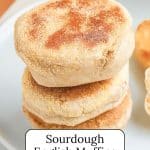







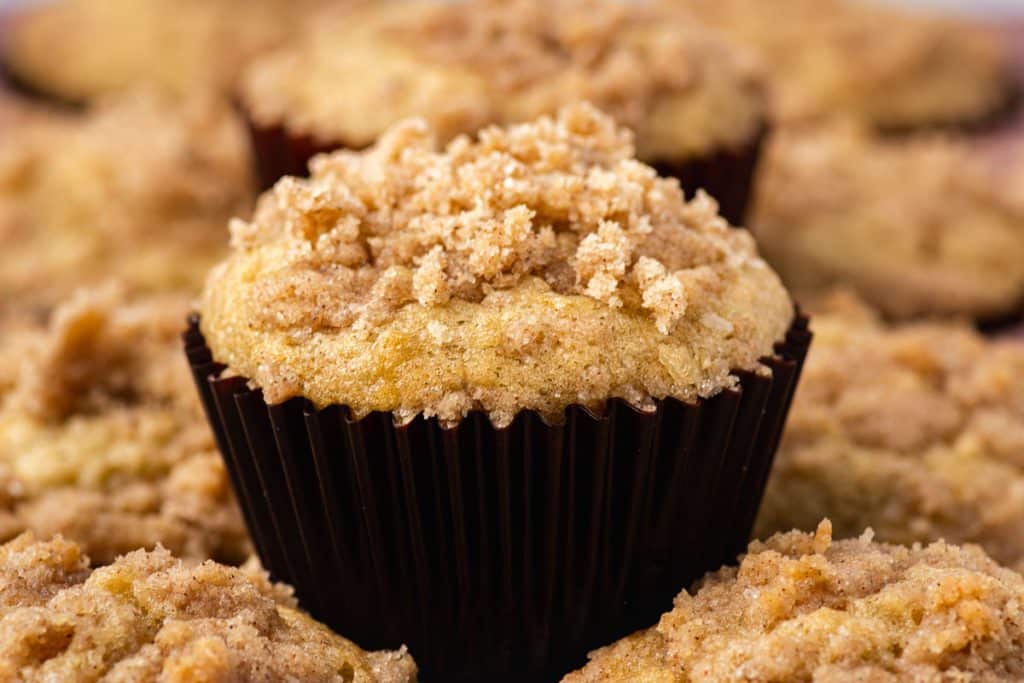
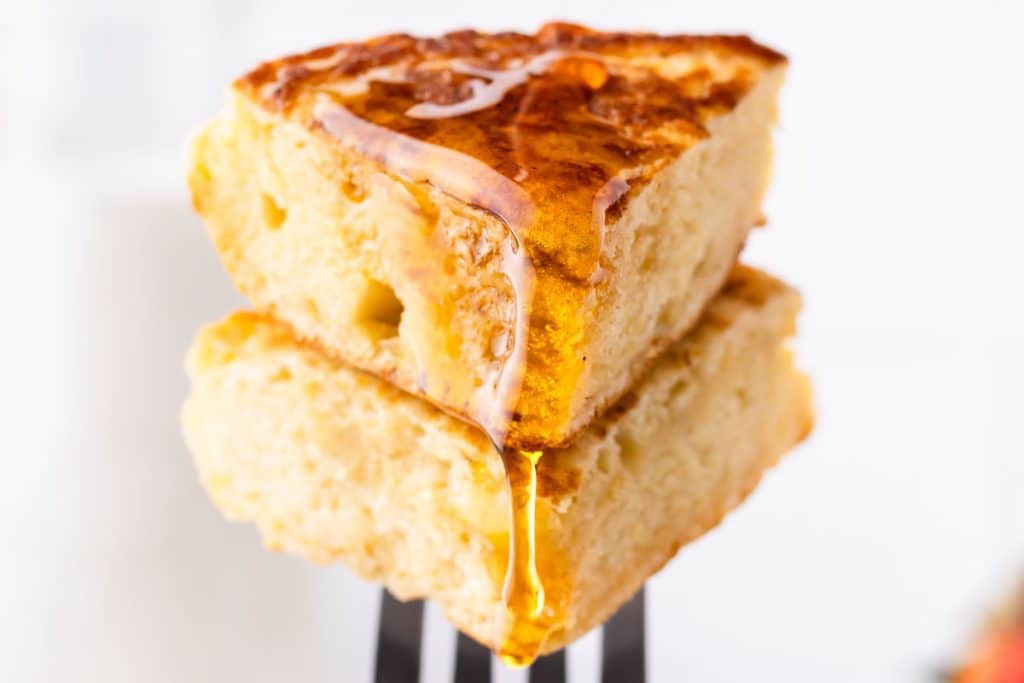
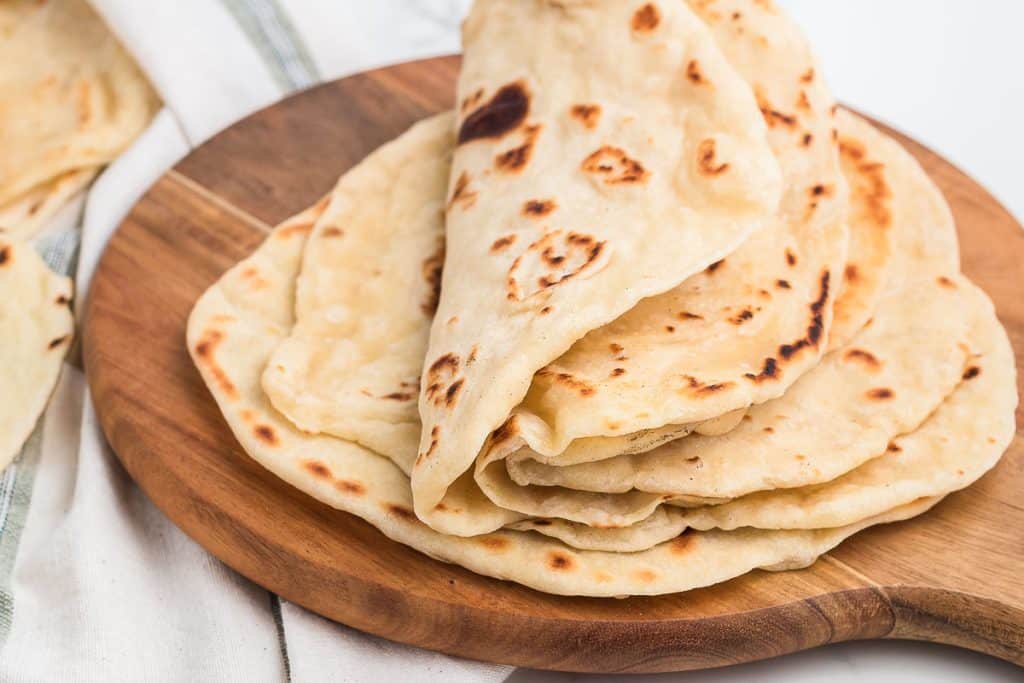


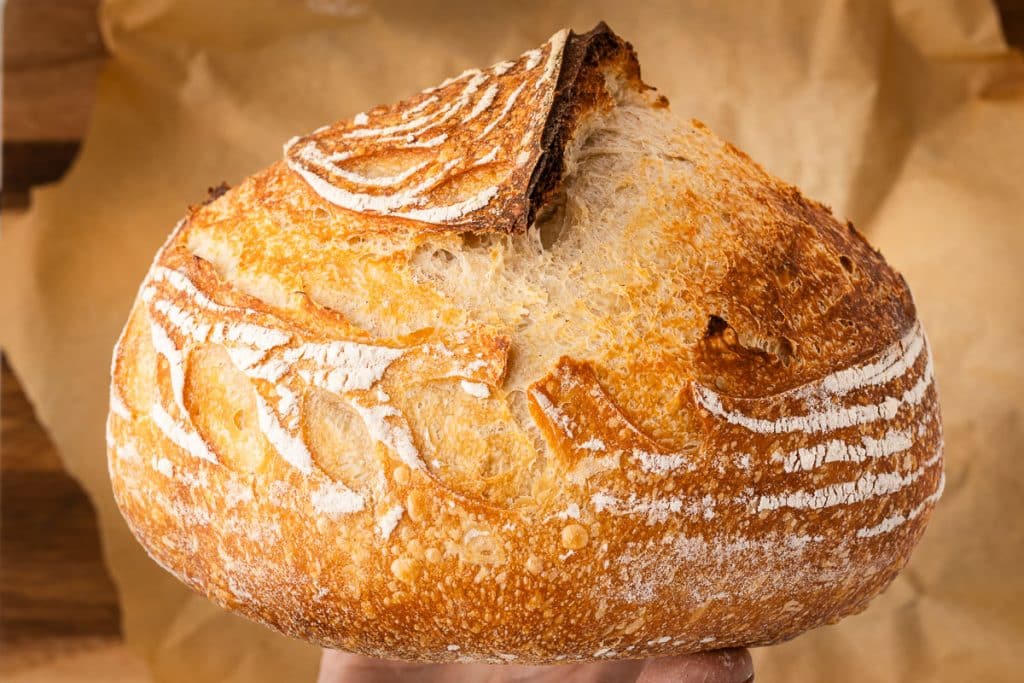
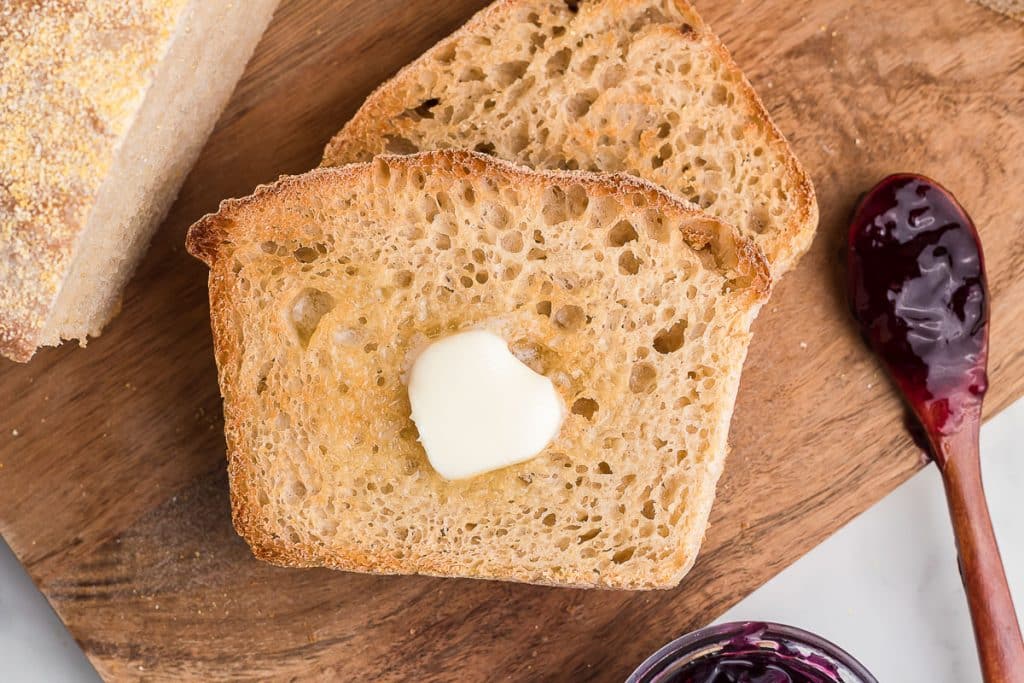
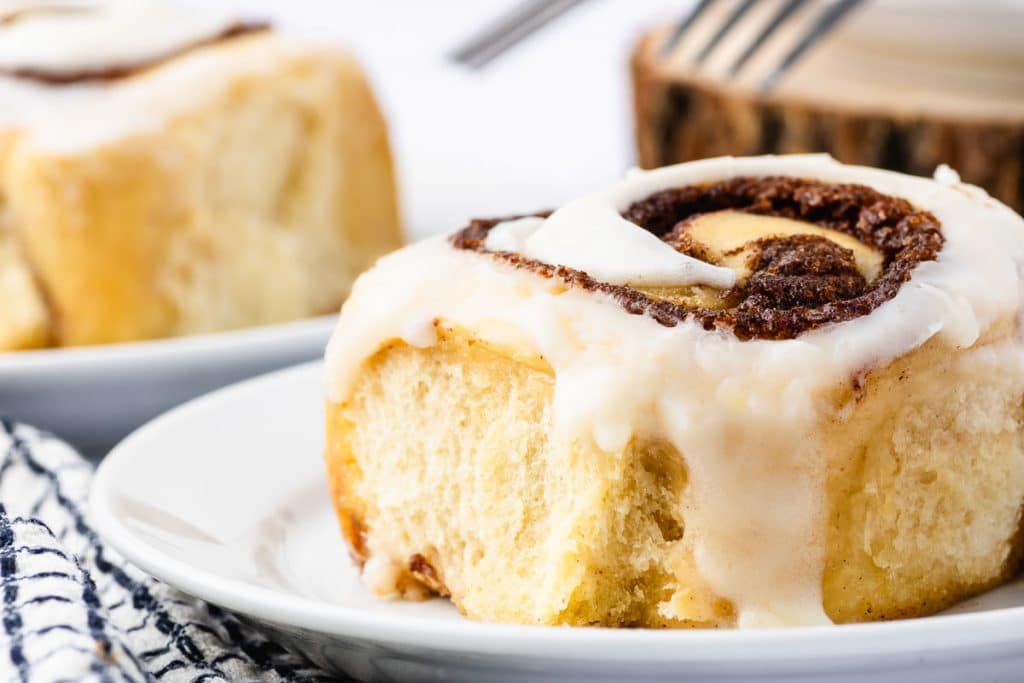
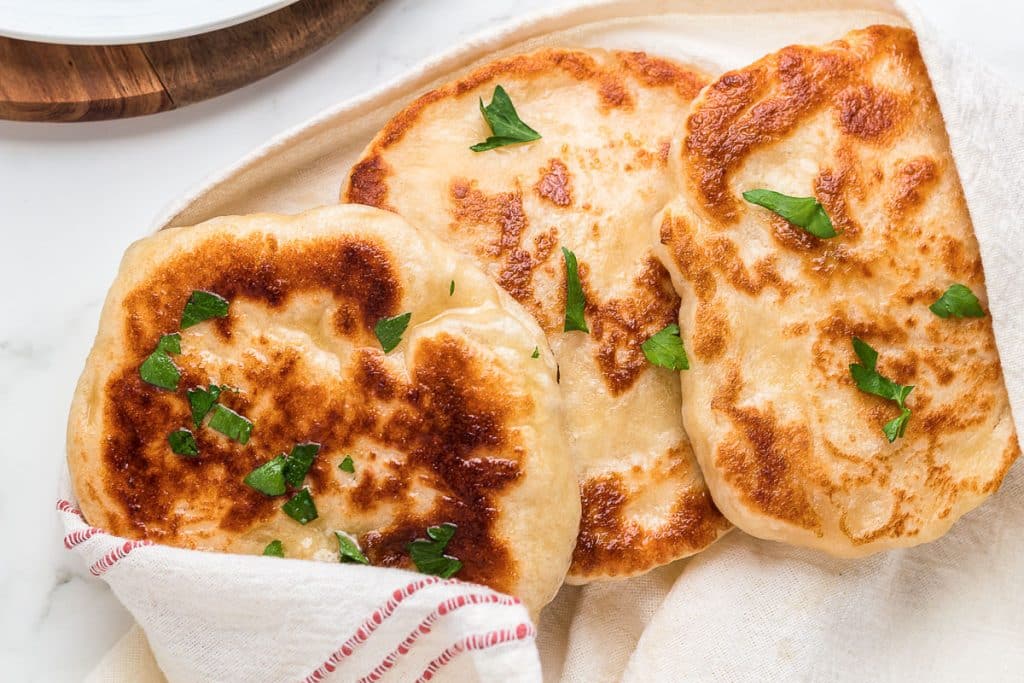
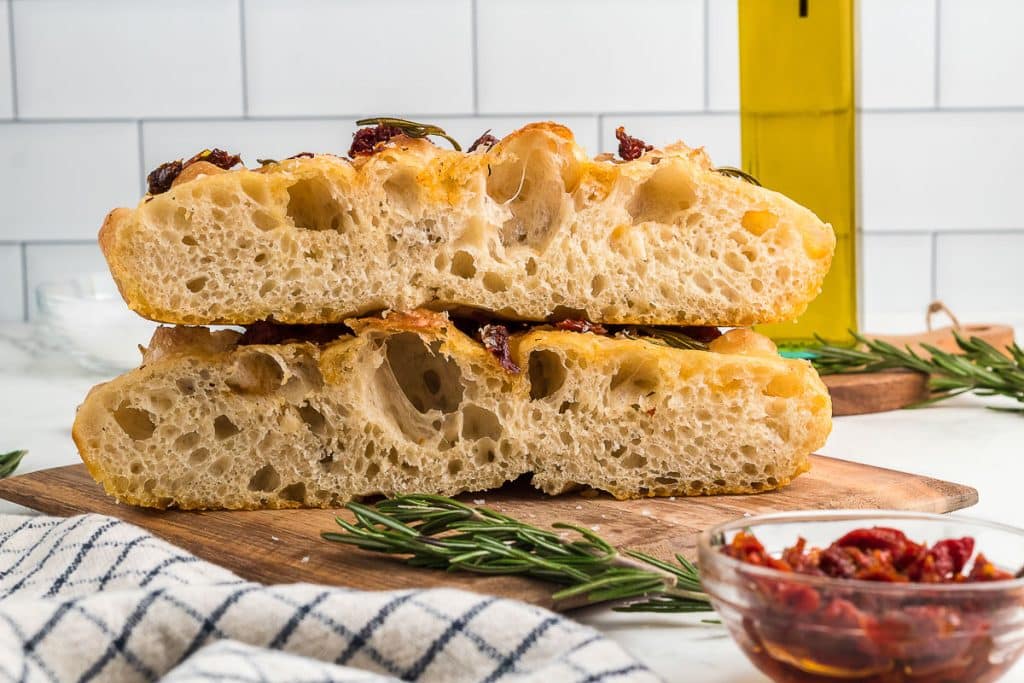
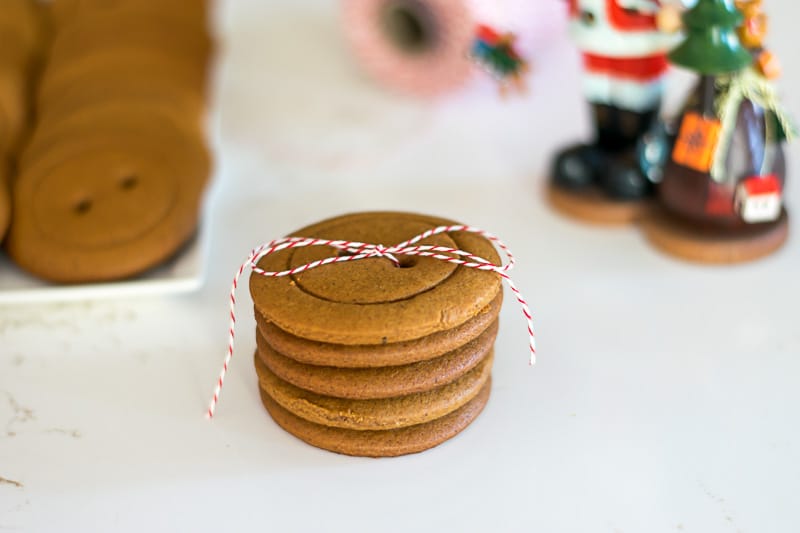
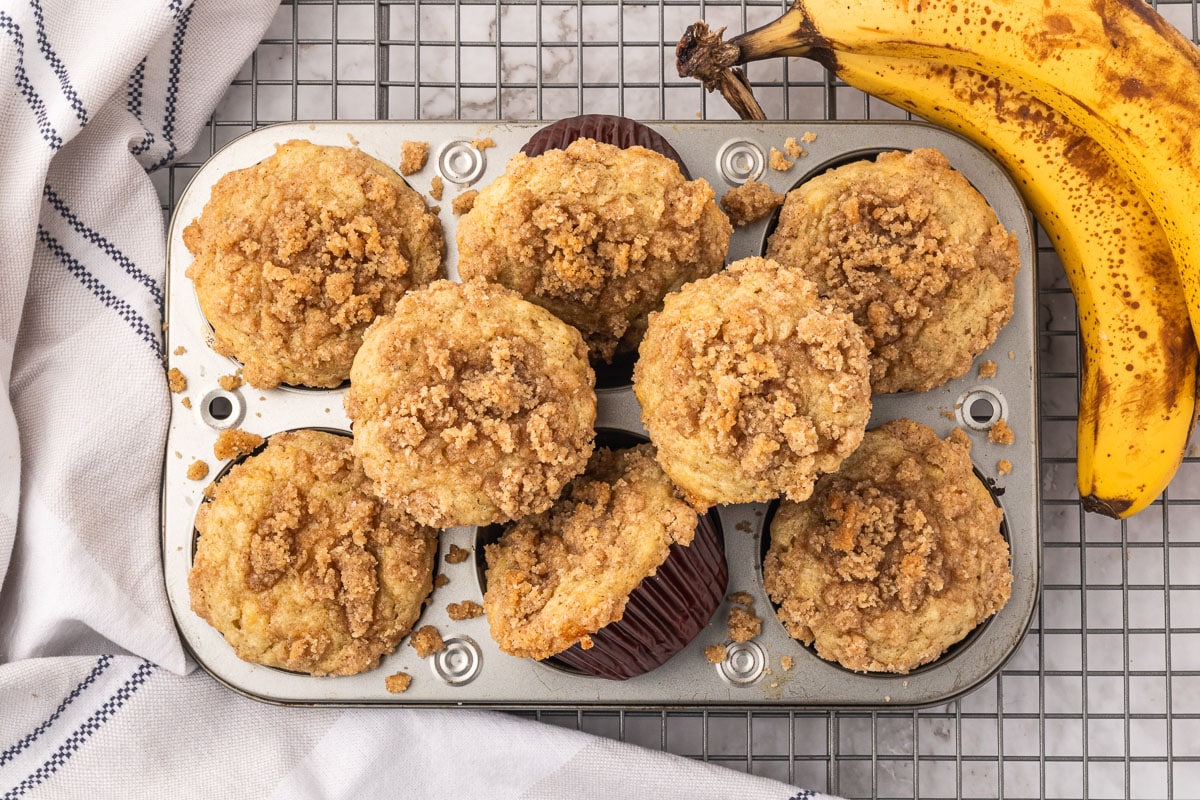


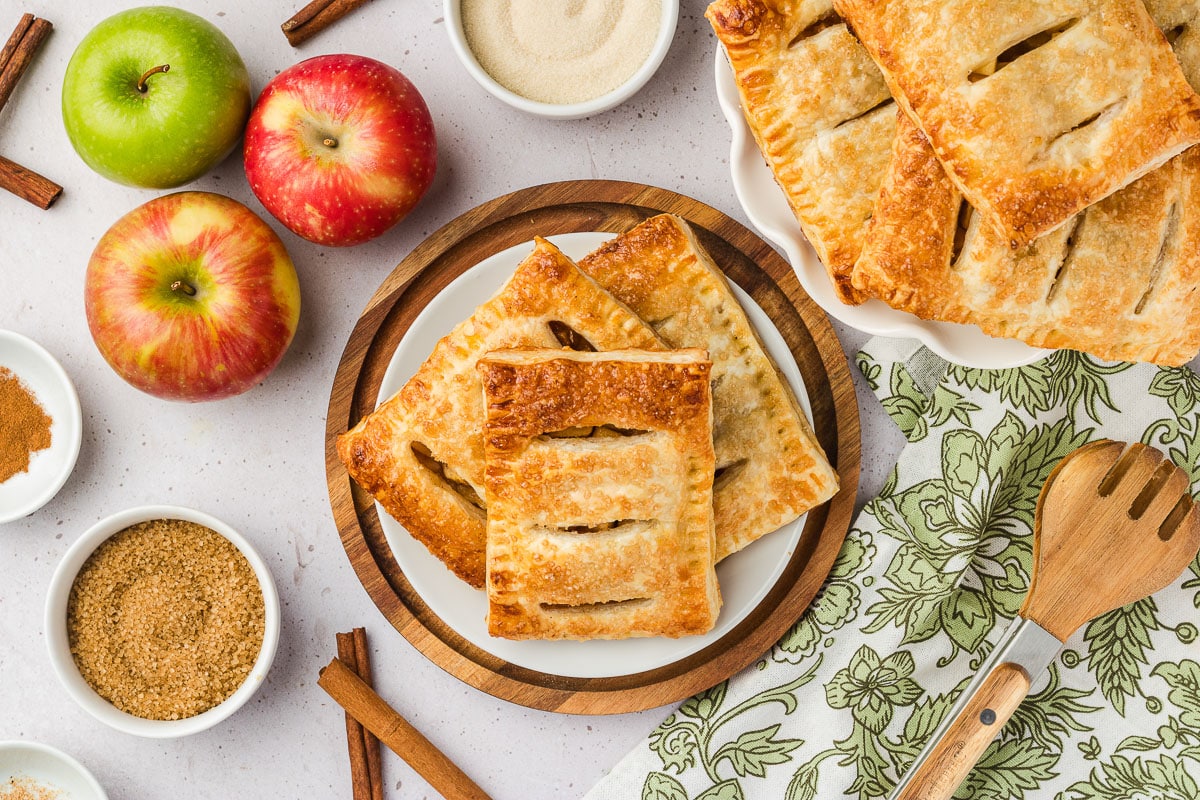
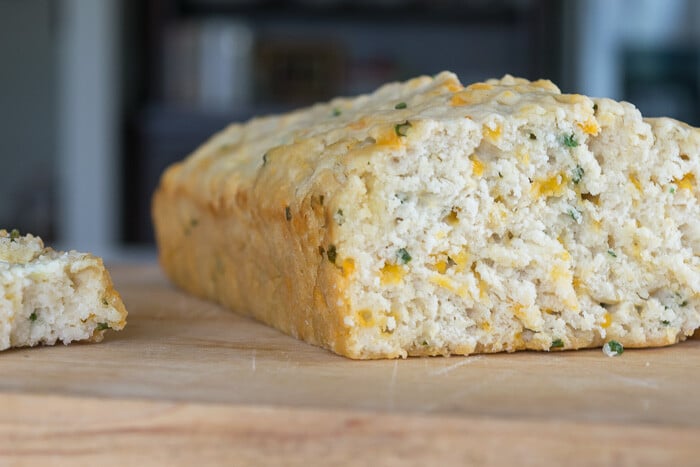
I can’t believe that this recipe has not been rated! It is by far the best and I have tried several over the last five years. The dough is easy to put together and the finished muffin is filled with nooks and crannies. I deviate in my cooking method because I am not good at the rolling out and using a biscuit cutter, nor have I had luck with a fry pan on the stove. So, I measure my dough about 92-95 grams and cook in an electric fry pan, either dry or with a smidge of avacado oil. The corn meal prevents sticking, they turn out beautiful… 6 mins a side, internal temp around 200.
Your recipe has been passed along to my bread baking sister and they love it too! Most of all, my husbands thanks you for the perfect breakfast sandwich!
Oh Debbie,
You’ve made my day! Thank you so much for giving your seal of approval to our Sourdough English Muffins! We think they are pretty darned tasty and easy to make as well, and I’m glad you shared how you put your own spin on cooking them! Future cooks will surely appreciate your input and guidance when making these muffins.
Reviews like yours are so important to small sites like ours! Thank you so much for taking the time to write in!
Hugs, Lynn